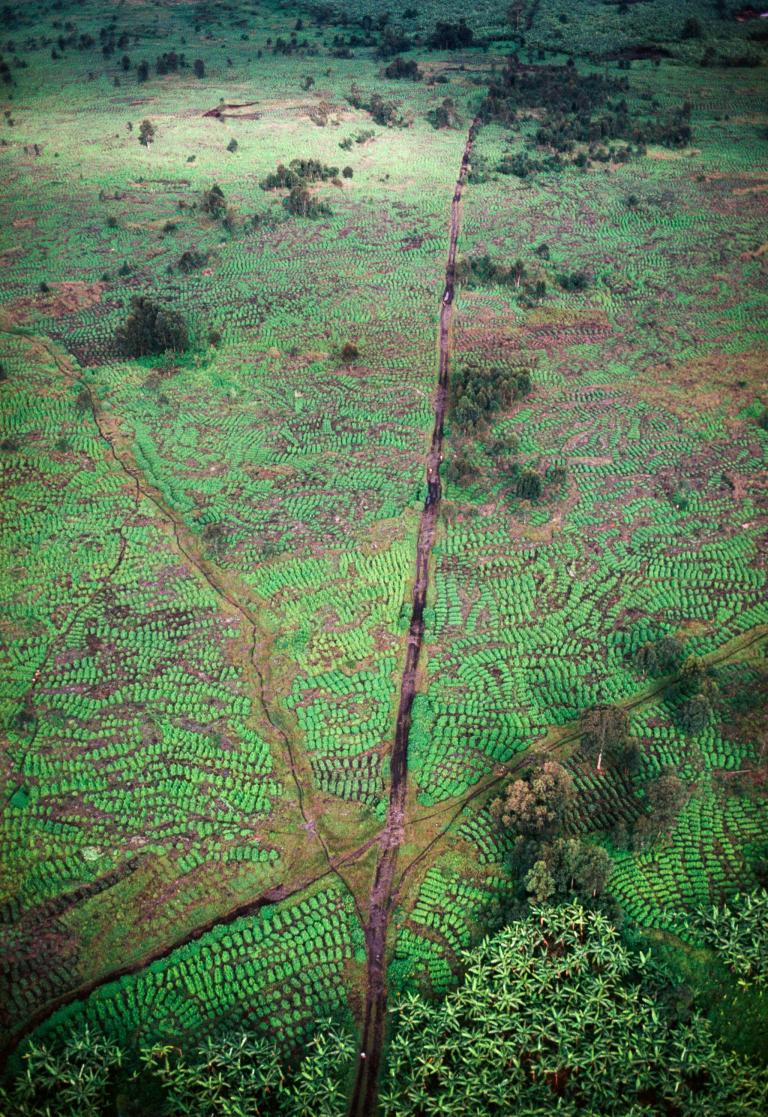Can Congolese Agriculture Fight Future Famines?

Solange, a 34-year-old mother, feeds her six children by selling peanuts in the streets of Goma, in the war-ravaged eastern Democratic Republic of the Congo. She travels one-and-a-half hours each way from her rural village in the outskirts of the city, hoping that she’ll go back home with an empty basket that night. On many days, Solange returns back home with her basket nowhere near empty. But on a good day, she says she can earn a few dollars. “We are lucky to have some small land around our house where we can grow these peanuts to sell,” she explains. “We grow some maize and cassava as well, but they’re for us to eat.” Solange is one of the millions of small-scale farmers in Congo and people like her are the backbone of the country’s agriculture, which accounts for 42.5 percent of its gross domestic product and employs most of its people. But this central African nation has been engulfed in the world’s deadliest conflict since World War II. And it is also consistently ranked at the top of the Global Hunger Index. Despite the negative influence of the armed conflict, this vast country, which is in the size of Western Europe, is synonymous with agricultural potential. And the stakes are high: The surrounding countries of Malawi, Zimbabwe, Zambia, and Angola are facing the worst food crisis in since 1985, which is expected to affect 50 million people by 2017. Studies show the chronic food shortages will be aggravated by climate change and might worsen the food security issues across the continent. However, Congo’s diverse climate may mitigate these effects somewhat. “Congo has vast lands both in the north and south of the equator. This means there’s a rainy season somewhere all the time. Unlike many other countries in Africa, Congo is uniquely resilient to climate change. All year round, Congo could be in full-time production,” says Alexis Bonte, Congo's representative at the UN’s Food and Agriculture Organization. And only a fraction of the country’s arable land is currently used for cultivation. There are 80 million hectares of uncultivated prime agricultural land; and Congo is home the second biggest rainforest in the world, he says. “Congo has the potential to feed up to two billion people,” Bonte says. “It could feed the whole Africa—even if the population keeps growing.” Apart from the food production potential of Congo, the rainforests in the country are part of the "lungs of Africa." They are home to more than 10,000 plant species used by the indigenous forest communities as medicinal plants. "[The rainforests in Congo] have all the resources to make new medicine, heal people and treat malnutrition," adds Bonte. So why are Congo's resources virtually untapped? A key reason is we just don't know that much about them. "One of the key challenges with agriculture is that it’s so wide and diverse, we just have little pockets of knowledge and unconnected dots," says Sara Menker, CEO of Gro Intelligence, a company which analyses global agricultural data. "Public lending institutions, banks, credit providers and insurers need to understand what drives agricultural ecosystems so they can create financial products that meet the need of the farmers,” she says.

